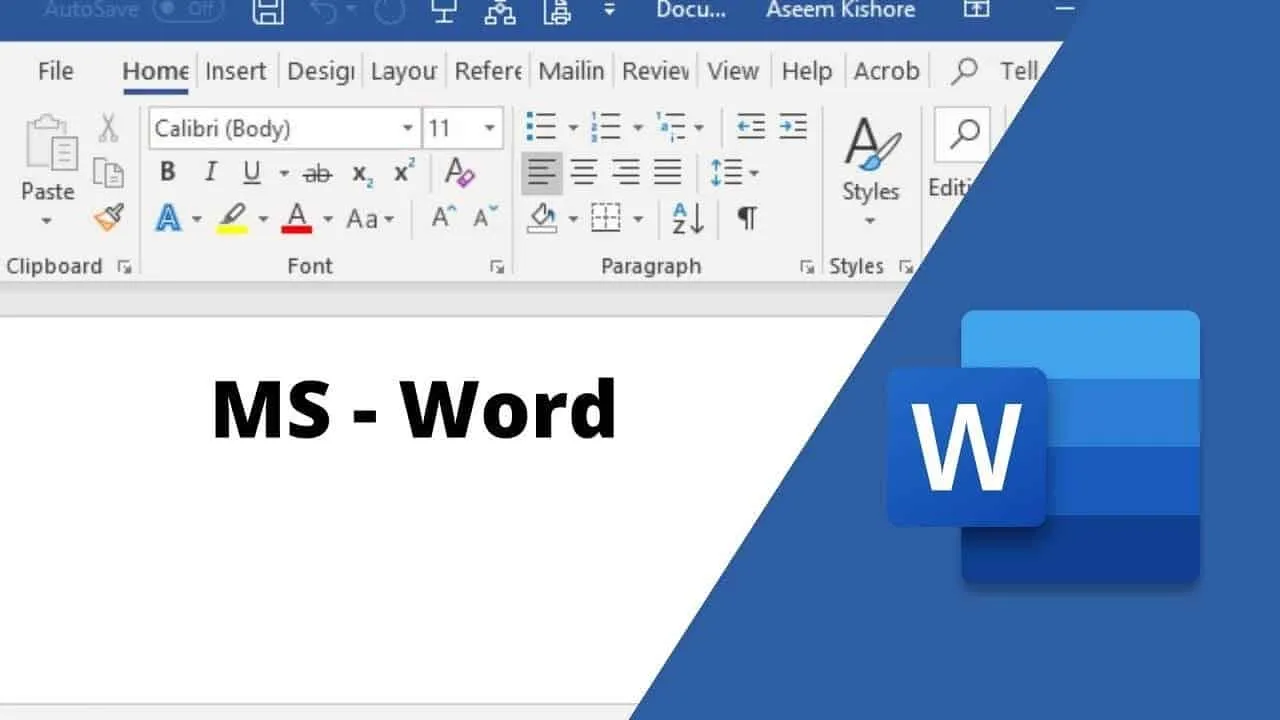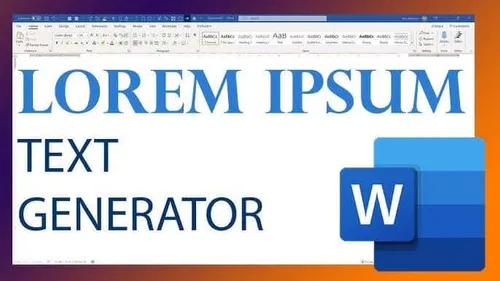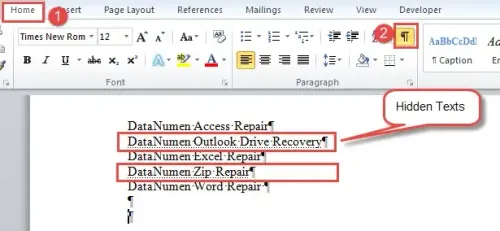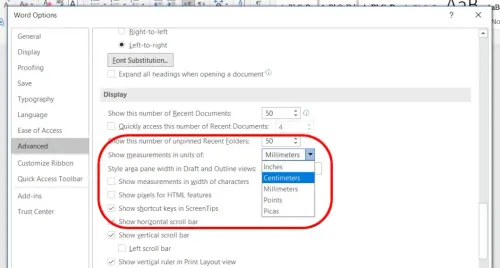
Do you want to impress your friends and coworkers? If so, try using some hidden features in Microsoft Word. You might have used Word for years, but you may not know about all its capabilities. This article will share eight hidden Word features that you often overlook. Let’s get started!
1. Random Text Generators

Do you ever need placeholder text for your documents? Maybe you want to test a layout or check how your formatting looks with real content. Instead of copying and pasting dummy text from websites, use Microsoft Word’s built-in random text generator.
This feature is super helpful for designers, developers, and anyone creating document templates. To use this feature, simply type `=rand()` for English text or `=lorem()` for classic Lorem Ipsum text. You can also use `=rand.old()` for older Word demo text.
Want to customize how much text you generate? You can specify the number of paragraphs and sentences. For example, if you type `=rand(3,5)`, Word will create three paragraphs with five sentences each. This makes it easy to fill your document with the right amount of text without any extra hassle.
2. Hide the Text

Do you have confidential notes or drafts that you want to keep out of sight? You can use the hidden text feature in Microsoft Word. I often use this feature to keep sensitive information from appearing in the final printout. It's also helpful for drafts or collaborative documents where you might want to leave notes for yourself or others without making the main content messy.
To hide text, select the text you want to conceal. Then, right-click and choose "Font." In the dialog box, check the "Hidden" option. You can also press `Ctrl+D` to open the Font menu and check the "Hidden" box.
Once you hide the text, it will disappear from view, but it is still there. To bring it back, select all your text and press `Ctrl+Shift+H`. This feature is great for keeping your workspace organized.
3. Generate Table Feature
Creating tables in Word can be time-consuming if you do it the usual way. But did you know you can create tables quickly using just your keyboard? Instead of going to the Insert tab, you can use the `+` and `-` symbols in your document to create a table.
For example, type a line like this: `+---+---+---+---+---+`. Then press Enter, and Word will convert it into a table with one row and five columns. If you want to add more rows, just press the Tab key.
Another method is to type your data with commas separating each value. After that, highlight the data and go to Insert > Table > Convert Text to Table. Word will turn your data into a neatly organized table. This method saves time and helps keep your information structured.
4. Cut Sections Separately and Paste Together
Microsoft Word has a hidden cut-and-paste feature that allows you to rearrange content more efficiently. You can cut multiple text sections and paste them all at once.
To use this feature, select the parts you want to cut and press `Ctrl+F3`. You can repeat this step for each section you want to move. When you’re ready to paste, hit `Ctrl+Shift+F3`. This action will paste all the copied text into your desired location without affecting the rest of your document.
For example, if you have a long list of names but only want to move a few, this feature makes it easier. You can quickly select, cut, and paste without losing track of your content.
5. Measurement Converter

Are you writing a report and need to convert measurements? Microsoft Word has a built-in measurement converter that can help. This feature lets you quickly switch between units like inches, centimeters, feet, and meters.
To use the converter, you first need to enable it. Go to File > Options > Proofing and select "AutoCorrect Options." Then, click on the "Actions" tab and enable the "Additional Actions" feature.
After that, highlight a number and its unit, like "12 inches." Right-click on it and choose "Additional Actions." Word will suggest possible conversions, making it easy to get the measurements you need without leaving your document.
6. Custom Ribbon Tabs
Want to have easy access to specific functions in Word? You can create your own ribbon tab. This feature allows you to group your most-used commands together for quick access. No more searching for a feature buried in the menus!
To create a custom tab, go to File > Options > Customize Ribbon. Here, you can add a new tab with your favorite commands. You can also rename and reorganize them according to your preferences.
One feature I like adding to my custom ribbon is the "Shrink One-Page" option. This feature tries to reduce the length of your document by adjusting the font size and margins. While it doesn’t always work perfectly, especially with complex formatting, it’s worth trying if you want to fit your content better.
7. Vertical Text Selection
Did you know that you can select text vertically in Word? Usually, we select text horizontally across lines. But by holding down the Alt key while clicking and dragging your mouse, you can highlight text in a column.
This feature is helpful when you need to select or delete items like list numbers or symbols without affecting the rest of the text. For instance, if you have a list of items and want to remove unwanted formatting, this method allows you to do it all at once.
8. Compare Documents
Have you ever wished you could easily compare two documents? Microsoft Word has a feature for that! When I receive edited articles from clients, I often use this feature to compare the original document with the reviewed one.
To compare documents, go to the Review tab and select "Compare." Open both documents, and Word will display the differences. This way, you can quickly spot any changes without reading through both documents manually.
Additionally, there’s a Document Inspector feature. This tool ensures your document is clean before you share it. Go to File > Info > Check for Issues and choose "Inspect Document." This tool checks for hidden comments, personal metadata, or invisible content and gives you the option to remove them.
Other Features You Might Want to Know About
We’ve highlighted just a few hidden features in Microsoft Word. But there are many more that can be useful. For example, Quick Parts lets you save frequently used text, logos, or headers and insert them with one click.
Another handy tool is the Screenshot feature under the Insert tab. It allows you to capture and insert screenshots of open windows or specific screen areas, making your documents visually appealing.
The Change Case feature, located under the Home tab, is also worth mentioning. It allows you to quickly switch text between uppercase, lowercase, or toggle cases without retyping.
Additionally, the Read Aloud feature in the Review tab can be a great way to check the flow of your writing. You can listen to your text, which helps you catch errors or awkward phrasing that you might miss while reading silently.
Conclusion
These hidden features in Microsoft Word can save you time and improve your workflow. They offer practical solutions for common tasks, making your document creation process smoother. So, the next time you open a document, try using some of these hidden gems. You might discover new ways to work more efficiently and impress your friends and coworkers at the same time!
Popular News
Latest News
Loading






